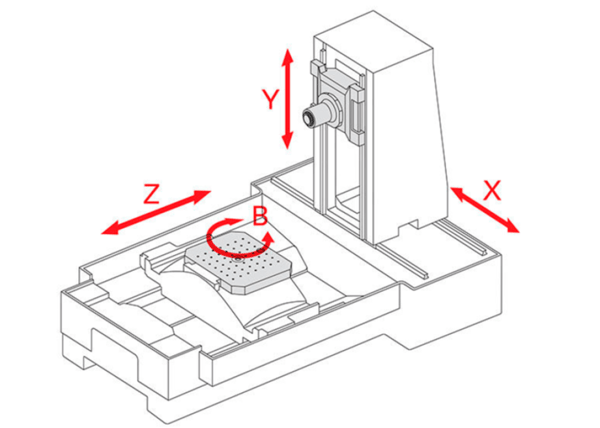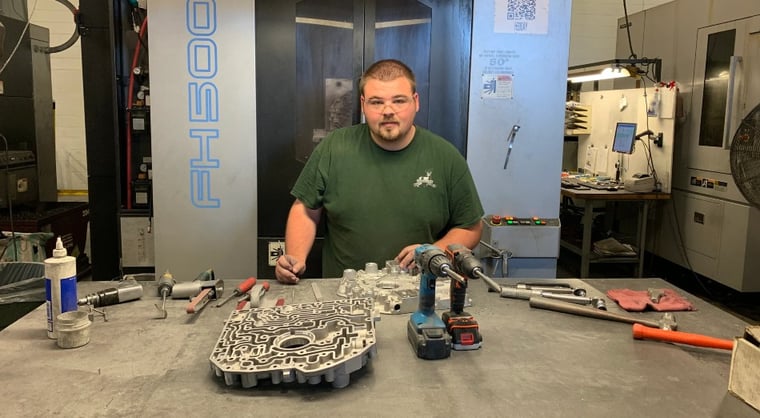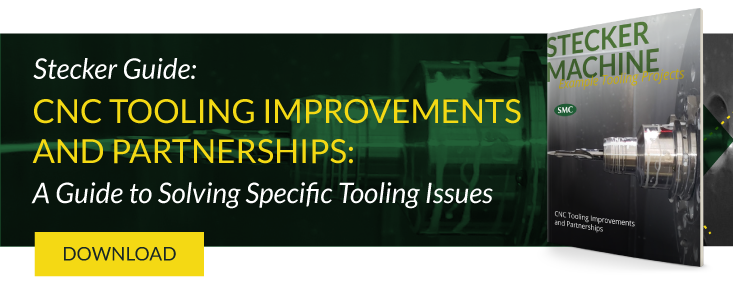The goal of modern CNC milling is to transform materials such as metal castings into finished, usable parts. That goal is only achievable by using incredibly precise CNC milling machines.
Computer software is the brains of a CNC (Computer Numerical Control) milling machine, controlling the machine and automating production to increase throughput with consistent quality. It’s this repeatability that makes CNC machining so efficient and so valuable to both customers and the machinists themselves (see “The Machinist’s Perspective” throughout this article.)
The end results? Custom machined parts that meet exact specifications in large quantities while achieving extremely tight tolerances. Highly skilled machine operators understand that CNC milling machines are not only important to their jobs but also to the manufacturing industry and its effect on the world’s economy.
What Does a CNC Milling Machine Do?
The thrill of being a CNC machinist is transforming a casting into a part that can be used and trusted, often within a larger product. These parts often require tight tolerances, which unfinished castings don’t have prior to operations done by a CNC milling machine.
- Flat Surfaces — CNC face milling puts flat surfaces on a workpiece. Face milling creates a finished sealing surface so flat that potential leak issues are nearly eliminated.
- Drilled Holes — Drilling creates a hole, and tapping adds threads. Through and tapped holes are the most common way to assemble parts. Drilling focuses on both the diameter and depth of the hole.
- Bored Holes — Enlarging an existing hole using a drill and a stiff boring bar with a single-point cutting tool forms a precise inner cavity within a workpiece. Boring allows parts to be assembled properly and tightly (achieving very tight tolerances for diameter) or for valves to consistently control the flow of air, oil, or gas.
When it comes to “tight tolerances,” how tight are we talking? A CNC machine can cut as precise as 0.001” (single-digit micron range), or about 1/4 the width of a human hair. And that’s done at an incredible speed.
The Machinist’s Perspective — Seeing the transformation of a casting into a finished part with a tight tolerance is a rewarding and recurring accomplishment. Maybe that’s why CNC milling machines keep operators so engaged.
How Does a CNC Milling Machine Work?
A detailed description of every CNC milling machine would require an entire series of blog posts! Here’s the most important thing you need to know: Range of motion is a key aspect of CNC milling, and it determines what can be accomplished by the mill’s tooling. In CNC milling machines, that includes 2-, 3-, 4-, and full 5-axis options.

- 2-Axis Machine — Used for manual fixture building; movement is only on the x and y axes; not a lot of repeatability
- 3-Axis Machine — Used often in vertical milling; movement on x, y, and z axes
- 4-Axis Machine — Most common CNC mill; movement on x, y, and z axes with an extra b axis, to allow the table to rotate allowing access all around a workpiece; usually limited to horizontal machines, yet advanced shops also use 4-axis vertical machines (normal vertical is 3 axis)
- 5-Axis Machine — Movement on x, y, z, and b axes and extra a-axis; these are specialty milling machines; not ideal for high-volume production parts
Vertical vs Horizontal Machines
There are two main spindle orientations in CNC milling machines. In vertical CNC machines, the spindle axis, which is called the z-axis, is oriented vertically. In a c-column configuration, the spindle travels in this direction, and the table which holds the workpiece moves in both x and y horizontal directions. Vertical machines are perfect for high-volume, fast-paced projects milled from one side, such as covers and brackets.
In horizontal CNC machines, the spindle z-axis is horizontal and typically parallel to the length of the machine. The spindle travels the vertical y-axis and horizontally in the x-axis. The pallet and fixtures hold the workpiece and move in the z-axis, and the b-axis rotates. Horizontal machining has several advantages: accessing machining from four sides, completing multiple operations on the same fixture, milling more complicated parts, and better chip evacuation.
The Machinist’s Perspective — It’s exciting to work with an in-house engineering department that knows the machines and knows the operators, creating an efficient workflow.
Can CNC Milling be Combined with Other Operations?
With computer automation and engineers’ imagination, CNC milling machines have the ability to mill nearly anything imaginable. These incredible machines also allow for additional operations to be added to the milling process, providing increased functionality.
For example, a lathe could first remove a bulk of a part’s material (which is faster than profile milling), creating any needed round turns. Then, the part can be milled, with holes drilled, taps added, etc. A single operator controlling both mills in one cell, or work center, can create a complete part. Not having multiple work centers and operators increases efficiency.
The Machinist’s Perspective — Being able to complete multiple tasks back-to-back not only gives a CNC machine operator a sense of accomplishment, it solidifies a reliable and valued position within the shop.
What are Stecker’s CNC Milling Machine Capabilities?
No two machine shops are the same, with each finding unique market niches and developing their own manufacturing strengths.
Stecker Machine is an example of a modern, high-end shop able to handle many CNC milling projects. Although equipment is regularly updated to meet customer demand, when this article was written, Stecker’s CNC milling machines include 61 horizontal mills and 14 vertical mills.
Depending on production demands, 95 percent or more of these may be running during a typical first shift, leaving the others available for setup. Having over four times as many horizontal CNC milling machines as vertical says something about Stecker’s focus on complex parts demanding tight tolerances.
In addition to standard milling tools, Stecker also uses specialty tooling when needed. For instance, one tool was custom ground to have all three diameters on it that would normally be done with three separate drills.
Another uncommon tool is an indexable head on CNC milling machines. Instead of the drill coming straight out from the spindle, the tool allows for a 90-degree turn off the spindle to be able to put holes in the sides on parts without having to do extra operations.
The Machinist’s Perspective — From a career perspective, operators know that their skills will always be growing and always be in demand. CNC machining is a rock-solid industry with endless opportunities.
We hope your knowledge of CNC milling machines is a little deeper, and you also see it from a machinist’s point of view. Stecker takes the time to make CNC machining a career, not just a job. The benefits are many, and the stable employment is appreciated by thousands of CNC machinists throughout the country.
Ready to learn a lot more about CNC machining? Our CNC Machining Industry Guide is a great place to continue your journey, from services to machines to casting to careers.
If tooling is your interest, read how to approach your tooling needs and dive into 4 real-life cutting tool improvement examples. Get our guide: CNC Tooling Improvements and Partnerships. Click the link below for instant access!







